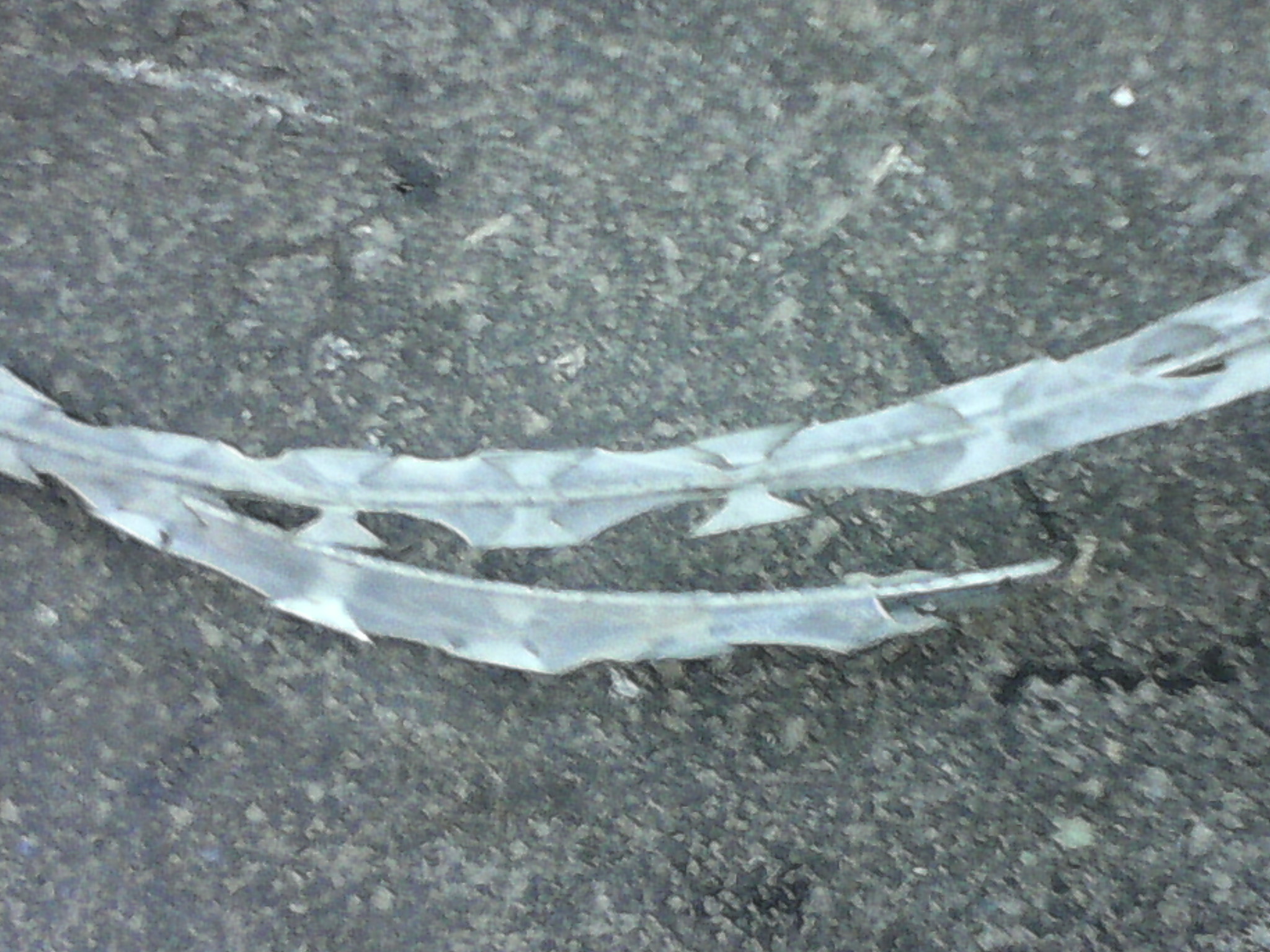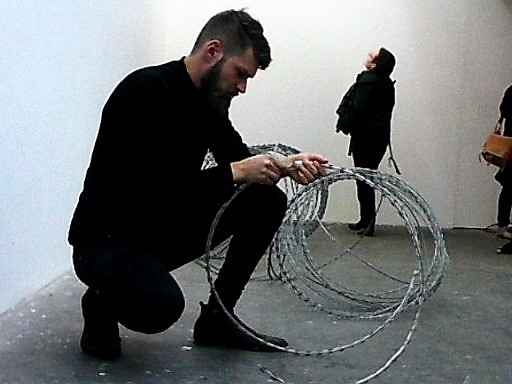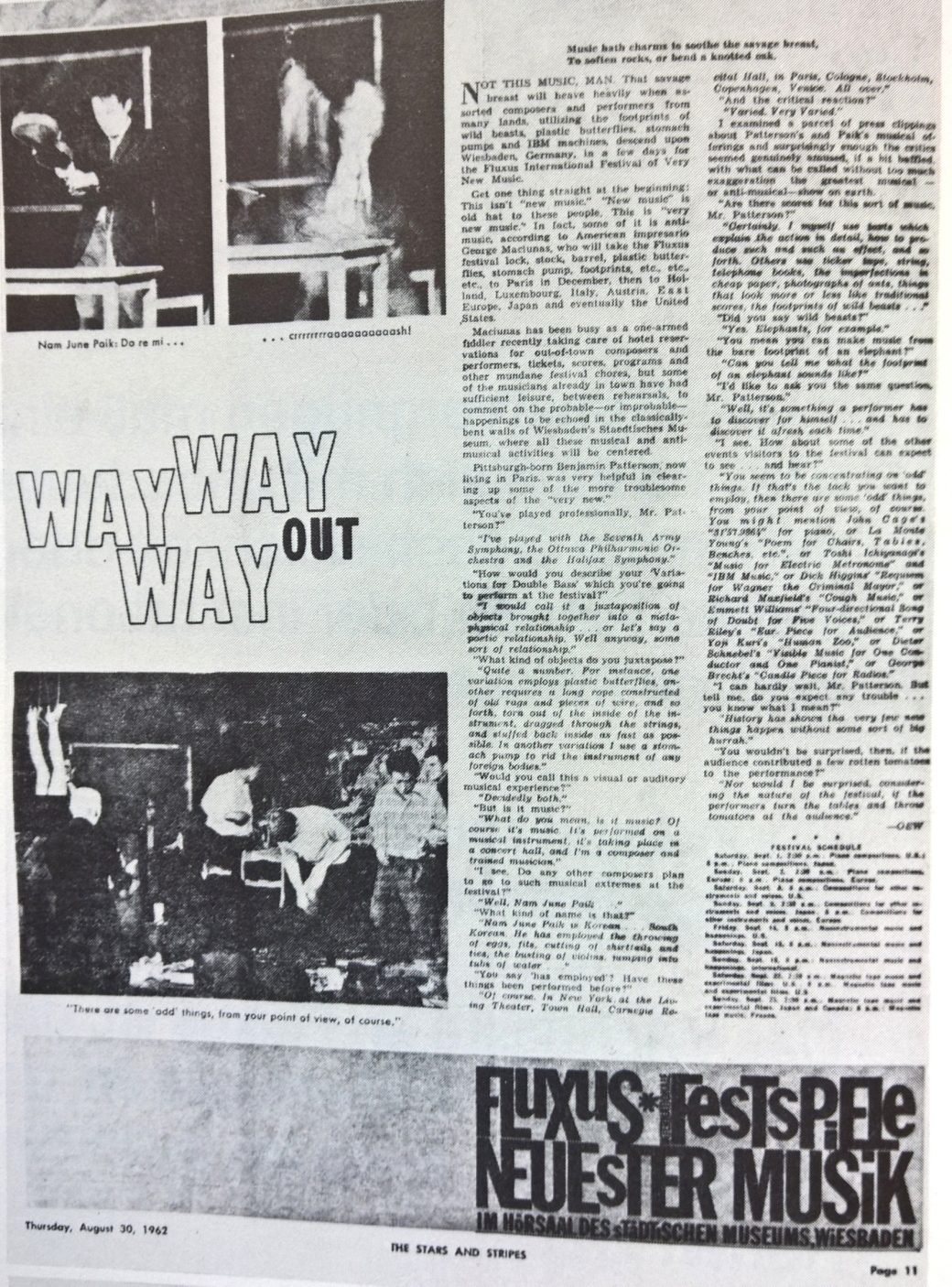Die Ankündigung der „performativen Skulptur“ „in-visible“ von Florian Huber als 2. Akt des Stückes „Regeldrama“ ruft die KATASTASE auf, die im antiken griechischen Drama die Bewusstwerdung der Protagonisten bezeichnet, die aufbegehrend zur Erkenntnis kommen und sich schließlich handelnd wiederfinden. So begegnen sie dem Verlust des kindlichen Einvernehmens mit dem Leben, denn als Heranwachsende müssen sie sich nunmehr Tod und Gewalt stellen und erfahren Schmerzen.
Huber hat ein Bild dafür gefunden, das er als Installation mit 30 Meter S-Draht aufgebaut hat. Seine Aktion verändert diesen mit messerscharfen Klingen bewehrten spiralig ausziehbaren Draht mit Schafsdarm. Geduldig schiebt er Meter um Meter des für die Wurstherstellung gereinigten Dünndarms zunächst auf ein Stück Schlauch, mit dessen Hilfe er das zarte aber unglaublich feste Gewebe schließlich um den klingenbewehrten Draht zieht.

Florian Huber, KATASTASE (performative Skulptur), 2025 Kunst und Kultur e.V., Hamburg, Foto: johnicon @VG Bild-Kunst
Martialische Sperren
Durch die Aktion wird der Draht umhüllt und seine Gefährlichkeit zumindest symbolisch reduziert. Das ist der Befund, doch hat das Stück heute weitgehende Implikationen, weil es in einem Europa spielt, in dem die einige Jahrzehnte offenen Grenzen im vermehrten Maß wieder geschlossen werden. Wer an den messerscharfen Klingen hängen bleibt, riskiert beim Versuch, solche martialischen Absperrung zu überwinden, sich im federnden Draht immer stärker zu verheddern und schließlich zu verbluten.
Der Logik des Stückes und der Technologie des Drahts folgend umhüllt der Darm die scharfen Zacken real und dämpft zumindest symbolisch ihre Schärfe. Doch lässt sich im Draht, der mit dem transparenten tierischen Gewebe symbolisch-wahnwitzig gebändig wird, im Hinblick auf die Menschen und Gemeinwesen, die sich dahinter verschanzen, auch eine weitere Aussage lesen. Es zeigt sich das Selbstbild derjenigen, die sich einzäunen. Die Einheger, die sich von Schmerz, ja sogar von Unbequemlichkeit, befreien wollen, vermeiden es offensichtlich, sich der Katastase zu stellen und versuchen so das eigene Erwachsenwerden zu umgehen. Daher muss denen, die sich hinter Drahtverhauen verschanzen, eine narzisstische Störung unterstellt werden. Sie wollen ihrer kindlichen Bruchlosigkeit nicht entwachsen und versuchen diejenigen aufzuhalten, die erwachsen genug sind, um zu handeln. Diese versuchen unerträglichen Verhältnissen zu entkommen und werfen sich wie die jungen Helden des antiken Dramas in die Welt. Auf ihrer Flucht haben sie schon bewiesen, dass sie mit solchen Hindernissen fertig werden können, was natürlich die Furcht derer, die sich in ihrer EXPOSITION (1. Akt von „Regeldrama“) einigeln, noch erhöht.
Zeitdimension der Aktion
Das Besondere des Stücks ist die Dauer der Handlung, die sich in ihrer handwerklichen Einfachheit dem Zuschauenden schon nach einem Durchgang erschlossen hat. Dennoch blieben die meisten Anwesenden, allein um dem Künstler beizustehen oder um den Fortgang der Aktion zu gewährleisten. Eine stille Anfeuerung vielleicht für eine Fortsetzung

Florian Huber, KATASTASE (performative Skulptur), 2025 Kunst und Kultur e.V., Hamburg, Foto: johnicon @VG Bild-Kunst
des Tuns, das man langweilig nennen könnte, wenn es nicht eine Aufgabe enthalten hätte, wie z.B. über das Gesehene nachzudenken. Dabei ist die Zeit nicht unerheblich, die uns im Alltag offensichtlich so oft fehlt und der man auch im Theater kaum begegnet, wo es immer Schlag auf Schlag gehen muss. Hier wird eben die Symbolik, von der man meint, dass sie eine Kurzform ist, zu einer Langform: Die Durchführung des Symbols – also des Drahts durch den Darm – erwies sich als ausgesprochen langwierig und veränderte so auch den Symbolbegriff hin zum Erkenntnisakt, der wiederum in der Vorstellung einer konkreten leiblichen Handlung einen äußerst scharfen Schmerz evozieren könnte.
Trotz allem leben wir heute nicht mehr in der Antike und wollen das Schauspiel der Folter nicht geboten bekommen, weshalb Künstler Möglichkeiten wie diese Performance ersinnen. Sie arbeiten daran, wenn auch symbolisch, den Schmerz zu bezwingen. Doch ist das nur ein weiterer Hinweis darauf, dass er uns in welcher Weise auch immer, weiter quält.
Die Aktion fand statt am 13. 10. 2017 im 2025 Kunst und Kultur e.V. Ruhrstrasse 88 (Im Hinterhof, gr. zweispurige Toreinfahrt, bis zum Ende durchgehen), 22761 Hamburg. Dort wird am 20.10. von 20-23 h Retardation, der 3. Teil des Stückes „Regeldrama“ (in 4 Teilen) gezeigt.

